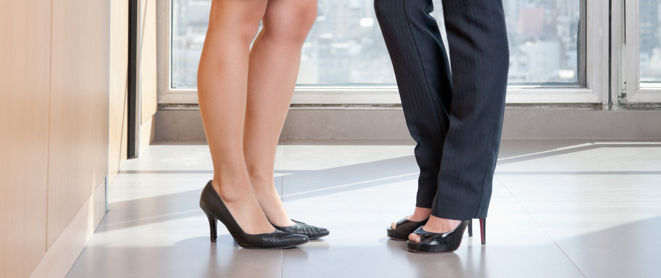Evolution of Business Attire: What Can HR Leaders Learn

This article was updated on July 19, 2018.
The evolution of business attire has long been a hot topic in the office. The New York Times even ran a piece that heralded the end of the dress code. Is a conservative dress code necessary to project a serious attitude to the market? Have casual Fridays evolved into a casual norm — and is that good or bad? In particular, what are the implications of a dress code for large organizations? And do enterprises with many workers in different positions — with different responsibilities and levels of public interaction — need to consider multiple dress codes? For HR leaders, determining how to structure guidelines for workplace dress is difficult as it crosses lines between branding, employee comfort, productivity and safety concerns.
Here's a closer look at some takeaways from the evolution of the business attire, and what they could mean for dress codes in your organization.
A Quick History of Business Attire
Business attire can trace its roots to historical fashion trends. The inception of the modern men's suit goes back as far as the 17th century. But by the Victorian era some 200 years later, the suit's design was streamlined and the more austere colors traditionally associated with today's formal business suits were introduced. In the early 20th century, the development of ready-to-wear, buy-off-the rack suits started to replace the more formal frock coat, which paved the way for the modern interpretation that is seen across the world today.
By contrast, the journey for women's workplace attire begins in the very formal 19th century (think buttoned up to the neck and coverage all the way to the ankles). Over time, that formality decreased and evolved with society's overall changing style, with casual blouses, shorter hemlines for skirts and even pants.
On the whole, formal dress codes for both genders began to relax in the 1970s with the introduction of new fabrics, textures and styles. By the 1980s, casual days had begun to enter some workplaces, and the proliferation of that casual sensibility has continued with great speed. Today, many workplaces eschew a formal dress code entirely, or at least have much more relaxed standards than ever before.
Clarify Your Definition of Casual Dress
Workers may see a business casual environment as a worthy perk when evaluating employers. Therefore, it's up to employers to determine whether casual is right for them and to provide a clear definition of what casual means. For example, in certain environments, sandals might be a perfectly acceptable choice but in others they might represent a safety hazard. For a large business, it may be necessary to clarify when casual dress is appropriate.
For example, Bloomberg reported on a financial services firm that allowed employees to dress more casually in the office, but required formal dress when interacting with clients. If your employees have diverse responsibilities, it may be necessary to clarify when casual dress is appropriate by role or depending on how an employee will be spending the day. Once you decide what your dress code entails, document it clearly in your employee handbook. Some organizations also conduct seasonal updates to help employees successfully navigate what is appropriate and when.
Consider the Impact on Culture
Your company culture can have a significant impact on what's appropriate for office clothing. For example, an investment bank is likely to have a different dress code than a trendy tech firm. It's important to evaluate the expectations of the talent you're hoping to attract, the culture you're hoping to build and what customers expect when interacting with your team.
At the intersection of those expectations is where you should find the right balance. For large organizations, embracing casual dress can help attract millennials and provide a much-appreciated perk to employees when appropriate — but it doesn't have to significantly shift your culture. Many organizations have helped to create a positive cultural impact by clarifying that new dress codes shouldn't impact service delivery or personal standards. Often, changes in dress codes are accompanied by statements such as, "Even though our dress code has relaxed, our commitment to customer service has not."
Dress Codes Should Be Fair and Equitable
A number of scandals recently cast a negative light on dress codes that had detailed guidelines for women, for example, or made reference to mini-skirts and low necklines. It's important that CHROs also consider their dress codes through a legal and safety lens. If you're establishing guidelines, ensure that they're fair and equitable to all employees regardless of gender, age and other demographic factors. Have clear guidelines on what's professional and appropriate for your environment and then let your employees find their own individual expression within those guidelines.
The evolution of business attire has been dramatic; even within the last few years, most workplaces have become more casual, intentionally or not. For CHROs and HR leaders, it's important to strike a balance between the expectations of today's top talent and meeting the needs of your customers, clients and business partners.



